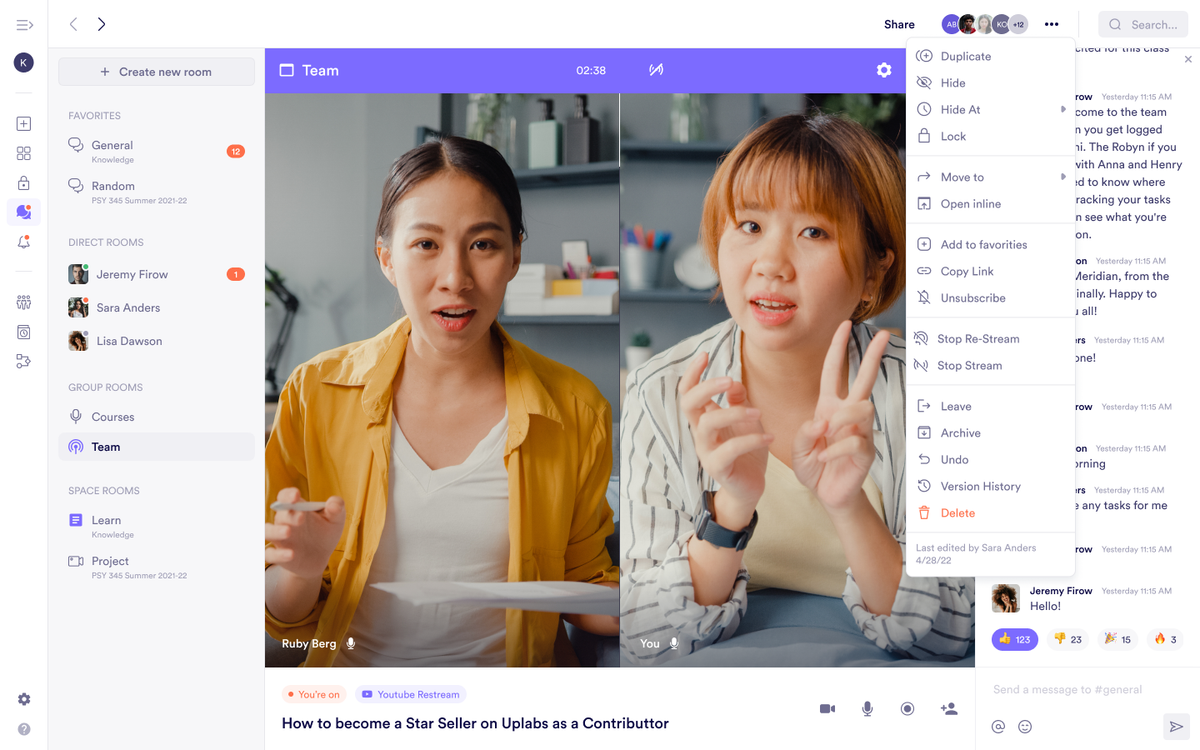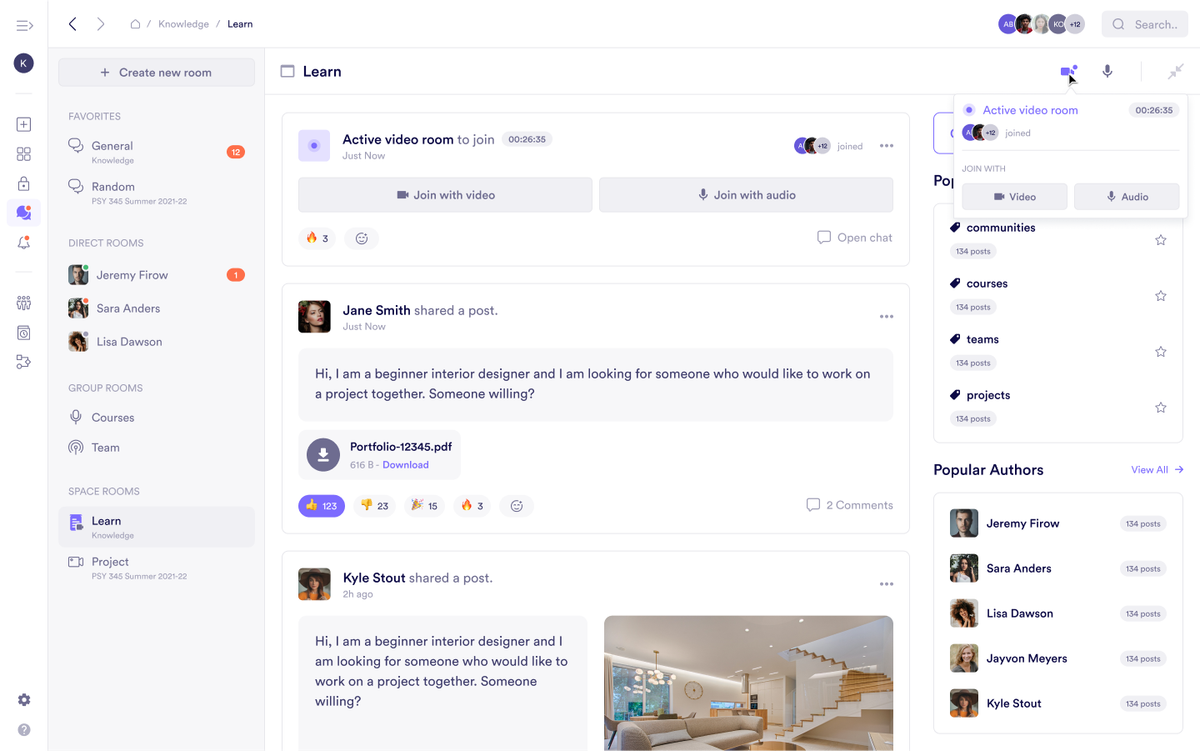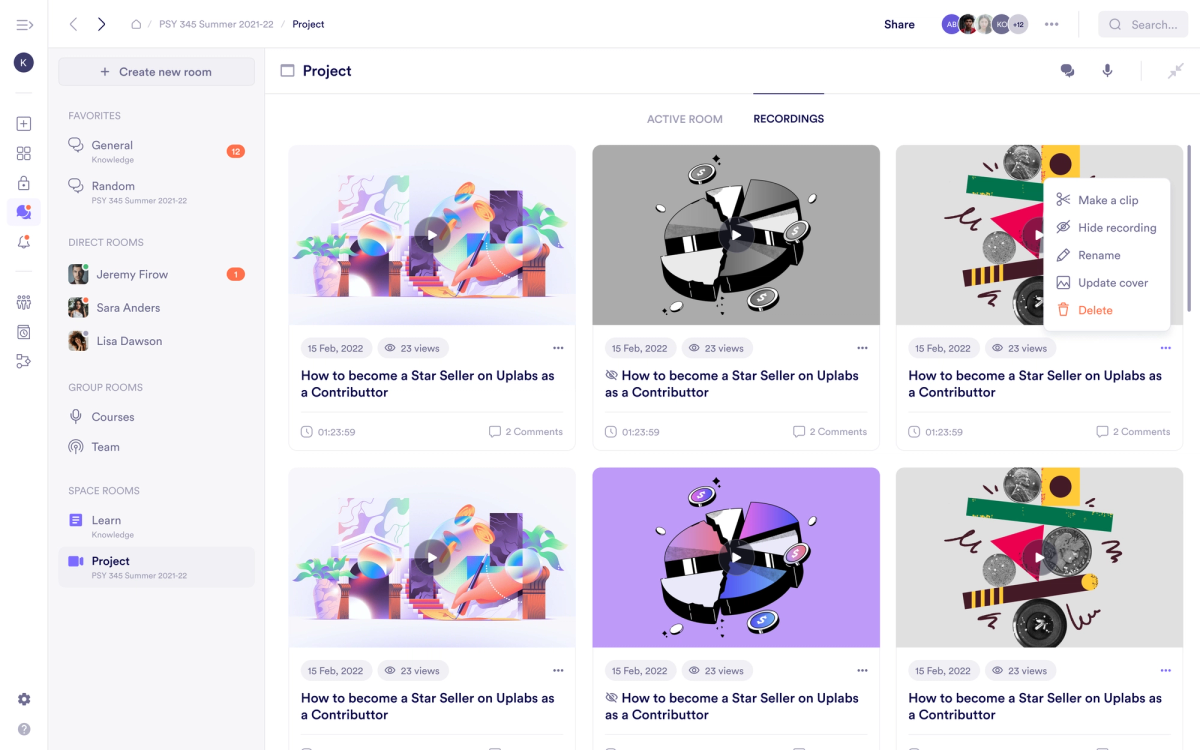Apr 3, 2025
Community Engagement Tools that Actually Work: Keep Your Audience Talking
 Jennifer Simonazzi
Jennifer Simonazzi
Followers aren’t the same as participants. And a feed filled with content doesn’t mean a conversation exists. The space might be active, but no one’s talking.
This isn’t a problem exclusive to creators. It hits educators, streamers, writers, even niche fandom groups. The question isn’t how to get more eyes. It’s how to make those eyes stick around and respond.
Explore real ways to build interaction that doesn’t vanish after one post. Around shared topics and something that can actually last.
Why Content Alone Doesn’t Drive Online Community Engagement
You can post the sharpest take, the cleanest video, the most generous how-to. Doesn’t mean anyone’s going to say something back. The format has to leave room for an answer. And most don’t.
People scroll past even the best posts when they feel like guests. They speak up when the space feels like it was built for them to weigh in. That usually means:
- A question without an obvious right answer
- A messy draft instead of a final cut
- A poll that actually changes the next post
- A thread that pauses and waits
Creators using thoughtful online community engagement strategies don’t just share updates—they create rhythms their audiences can contribute to. That doesn’t require spectacle. It just means posting in a way that says: “Your reply fits here.”
Post like you’re starting something, not just finishing it. A request for feedback, a first sentence waiting for more, a post that holds the door open. These aren’t hacks. They’re invitations. And most people need one before they talk.

How to Structure Community Chatrooms for Real Interaction
Replies vanish in feeds that move too fast. Someone shares a link, someone reacts, then five more things pile on top. You can’t build conversation in a space where everything’s talking over itself.
Different types of interactions need their own rooms. The same way you wouldn’t host a Q&A in the middle of a concert, you probably shouldn’t drop feedback requests into the middle of casual chat.
Here’s what helps:
- Separate threads for announcements and replies
- Dedicated rooms for check-ins, calls, or Q&A
- Posts that don’t get buried in chat logs
Unlike chaotic group chats, community management platforms that separate updates, replies, and events allow discussions to breathe. The space slows down just enough for people to read before typing.
Conversation isn’t just about what’s said—it’s about where it happens. The layout matters. People talk more when they know where to talk, and what kind of talking belongs there. Give that to them. Then let them speak.

How to Monetize Online Communities Without Killing Participation
People pay to be closer, not pushed aside. The worst thing you can do with a subscription is wall off your audience and then disappear behind it. A paywall isn’t a prize—it’s an invitation to show up more fully, not less.
Creators monetizing online communities succeed when they offer ways to contribute, not just consume. That means giving members a seat at the table, not just a link to a folder.
Try this instead:
- Post a draft and ask for feedback before it’s final
- Let top-tier members vote on next month’s topic
- Drop in behind-the-scenes questions and tag names directly
- Make small rooms feel intentional, not just smaller
People who pay want proximity. Not content dumps. Not reposted archives. They want to feel like their presence matters. When the space gives them a way to shape what comes next, they don’t just stay—they speak.
If your paid space feels too one-sided, this guide breaks down how to run a subscription model that keeps your members active without losing control of your voice. You’re not selling access. You’re building a room that only exists because they walked in. Treat it like that.
Using Membership Management Tools to Tailor Conversations by Audience Type
A single thread can’t hold five different kinds of people. Public followers, casual fans, longtime supporters—they’re not looking for the same experience. They don’t want the same conversation either.
You don’t need to give everyone everything. You need to build the right kind of space for each level of closeness.
- Let public posts spark general replies
- Keep mid-tier threads focused on in-progress work or light feedback
- Use smaller rooms or live sessions for top-tier check-ins, early reads, or help shaping the next drop
With the right membership management tools, you can decide who sees what, and when, and set the tone for how each tier participates. It’s not about hoarding content behind a paywall. It’s about choosing the right pace, the right group, the right ask.
You’re not splitting your audience. You’re creating separate rooms with different acoustics. Some conversations need quiet. Some need the noise. Let each one happen where it makes sense. Let each group feel like you were waiting for them.

Collaborative Content Creation Tools That Keep Your Community Involved
People remember what they helped make. They don’t remember posts they scrolled past or content they didn’t touch. The longer they just sit and react, the easier it is to forget they were ever there.
Collaboration isn’t a handoff—it’s an invitation to shape what exists. Ask for names, titles, edits, prompts. Let them in early, not just after you hit publish.
Here’s what works:
- Share rough drafts and ask for fixes
- Build out guides or timelines together
- Start a series based on what people suggest in the comments
Collaborative content creation platforms help creators turn passive followers into creative contributors. And the more someone contributes, the more they care.
Communities fade when they only echo. They stay loud when they feel like something is still being made—and they get to help make it. Give them that. It doesn’t need to be perfect. Just real, and in progress. That’s enough to keep them coming back.
Track Your Team Content Creation Process with Structured Pipelines
Once people start showing up, it gets messy fast. One post leads to ten replies, someone links an old draft, someone else asks a question that’s already been answered. And then you forget where you put the thing everyone’s asking for.
Even small groups hit that wall. The post isn’t where it used to be. The feedback thread is buried. Someone missed the event because it was only mentioned once. Without structure, people don’t stop caring—they just stop keeping up.
That’s where rhythm matters. Clear places for:
- Active drafts
- Ongoing threads
- Past recordings
- Content pipelines
- Requests that still need replies
Team content creation tools give you a simple way to track what’s been shared, what’s coming next, and who’s involved. It doesn’t need to be fancy. It just needs to work.
If people have to guess where to look, they won’t. And if the thing they helped build disappears too fast, they’ll start to think it didn’t matter. Structure keeps it going.

Build a Community That Responds to Its Members
People don’t need more things to look at. They need places where their words matter.
You can’t force replies, or schedule loyalty. But you can shape the space. You can make it easier to stay than to leave. And when the setup works—when the conversations have places to land, when the content feels unfinished just enough, when the people closest to your work feel like they’re inside it—the talking happens on its own.
The replies don’t need to be long. They just need to show up. One comment, one edit, one vote. That’s enough to let you know the room is alive.
If you’re building around people, Pivot’s made for that. Its spaces, rooms, blocks, and memberships were designed with creators, community leaders, and educators in mind. Not to add more noise; but to give the right kind of conversation a place to grow. For more on building spaces that actually talk back, this piece breaks it down through real use cases.
Explore more capabilities HERE.

Jennifer Simonazzi
Content Writer
Share this post
Table of Contents
Subscribe to never miss out on updates and inspiration
Watch new Pivot tutorials, attend live training sessions, and get access to exclusive new features.
